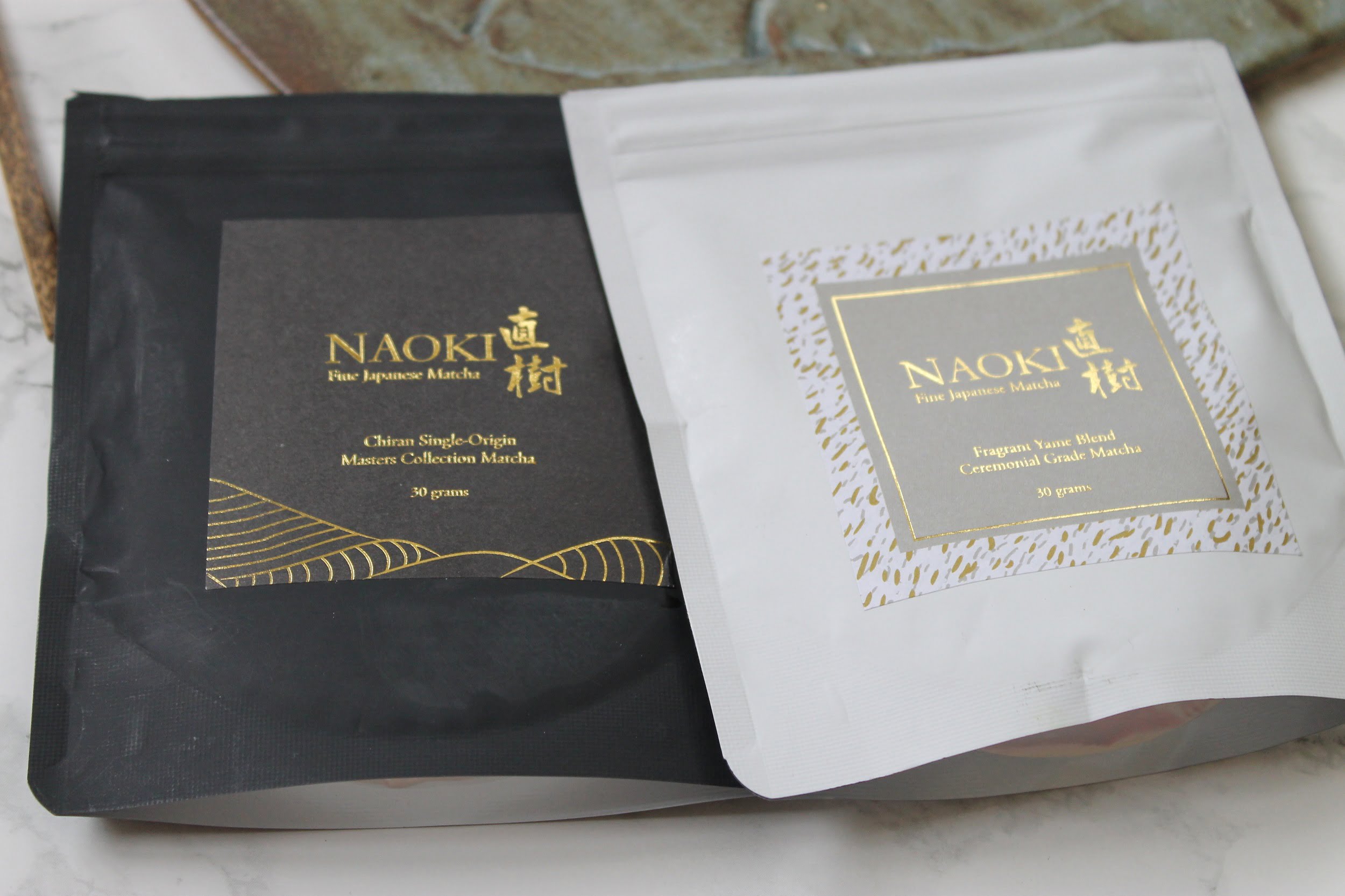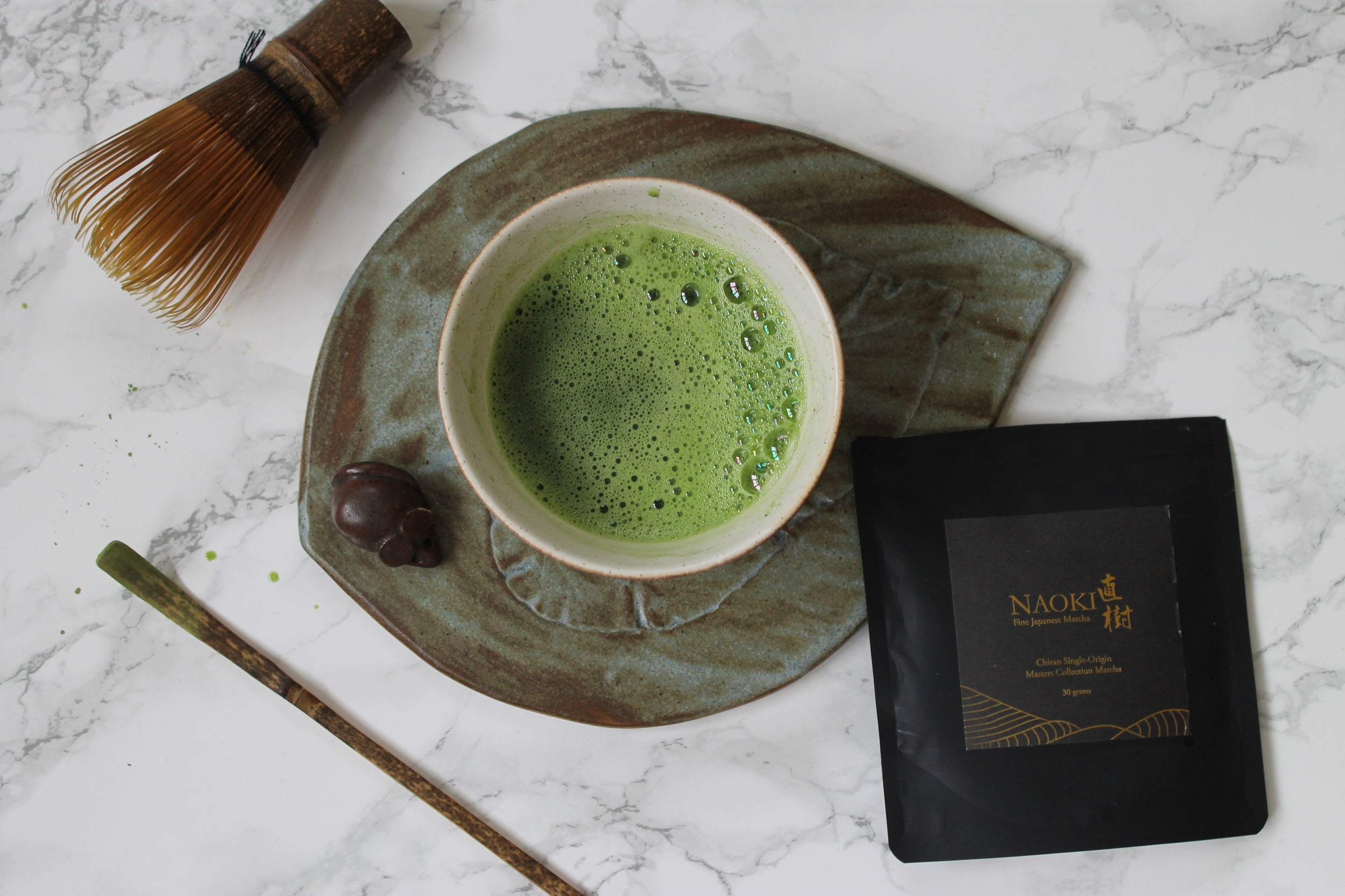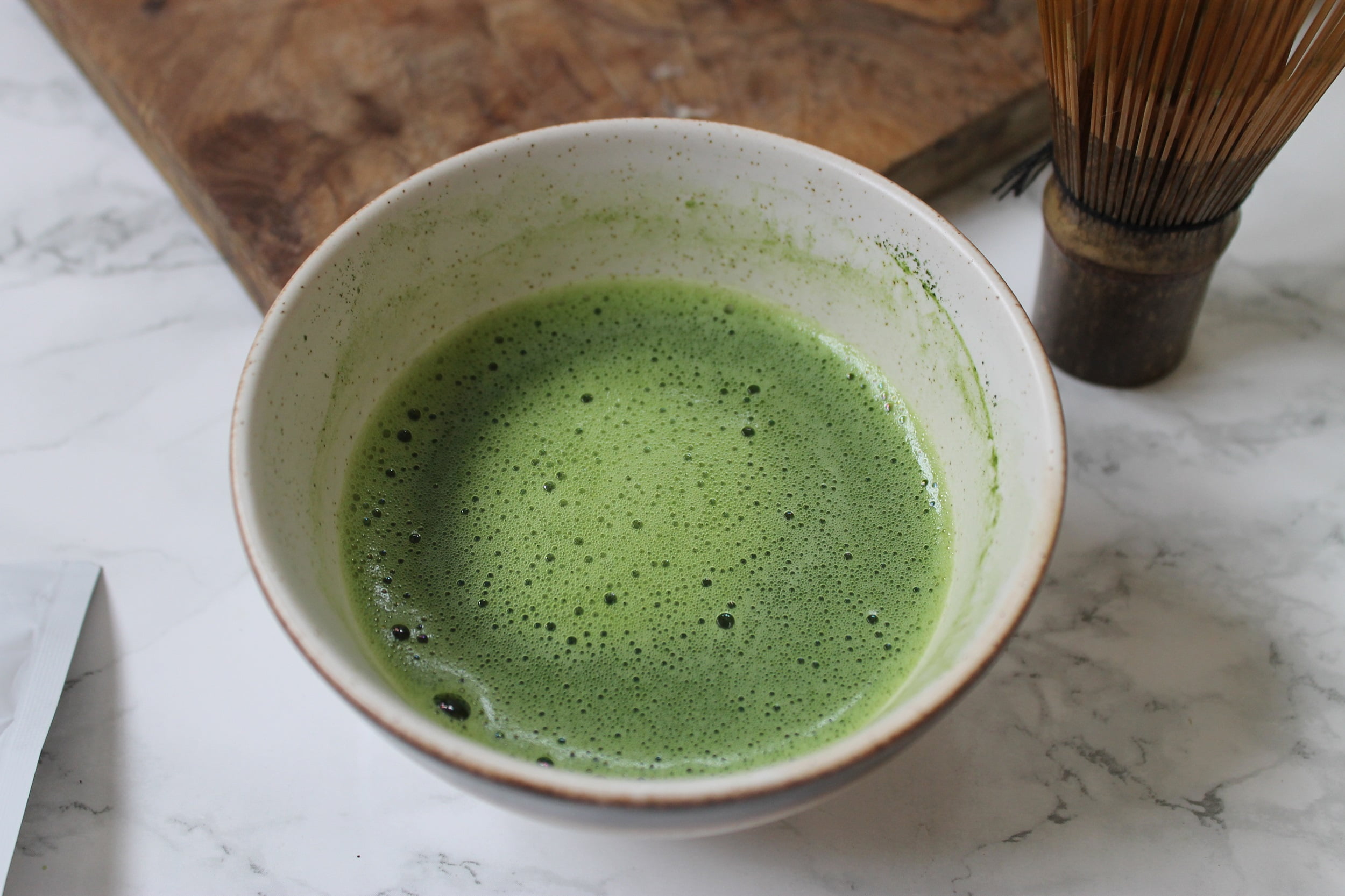
Naoki Fine Japanese Matcha Tea Review

I can’t quite find the words to express how excited I am to be sharing this matcha tea with you! Naoki matcha is easily some of the best matcha available today, and to celebrate their launch in the UK, I’ve been gifted two of their best matcha teas to review at Immortal Wordsmith.
Fragrant Yame Blend Ceremonial Grade Matcha is renowned for being sweet and delicious while Chiran Single-Origin Masters Collection Matcha is intensely flavoursome with nutty umami notes.

Below you’ll find my reviews for both matcha teas, including colour, flavour, brew method, and origins. You can find both of these, plus more fine Japanese matcha, at Naoki Matcha.
Fragrant Yame Blend Ceremonial Grade Matcha

Fragrant Yame Blend is so much sweeter than any matcha I’ve had in the past. The aroma from the dry powder is fresh cut grass, doused in melted butter with a teaspoon of icing sugar! It’s quite extraordinary.
I followed the Usucha method for both this matcha and the Chiran Single-Origin matcha (learn more about my matcha-making methods below) and quickly whisked up a good foam over the vivid mid-green matcha tea.
The aroma of the whisked matcha is much smoother – less grassy, more buttery. There’s a slight roasted or toasted rice note to this tea too, which reminds me of buttery popcorn or a cup of genmaicha.
The initial flavour is smooth, naturally sweet, and grassy matcha. It sweeps over your tongue with a silky-smooth texture – you will want to take a moment to enjoy this. As the matcha washes to the back of your mouth, a little drying astringency creeps in at the sides of your tongue. Once swallowed, a rush of smooth creaminess fills your mouth and soothes this instantly.
I couldn’t detect any of the floral notes in this matcha. Regardless, it’s the natural sweetness and creaminess in the aftertaste of this matcha that gave it a 5-star rating. As my regular readers know, I have a bit of a sweet tooth and Naoki Yame matcha hit the spot in a way I never expected it could.
I also highly recommend this matcha to any beginner. With low astringency and those mild sweet and creamy notes, it’s perfect for anyone who only has experience with a Starbucks Matcha Latte and wants to transition to high-quality real Japanese matcha.
About Naoki Fragrant Yame Blend
This blend won the silver award in a National Tea Competition in Japan. It’s a blend of teas from Yame, in the Fukuoka Prefecture of Japan. Apparently, this region is better known for making high-quality Gyokuro teas, but I think they should consider switching to matcha indefinitely!
Naoki are all about selecting different tea regions in Japan to create a range of matcha teas with unique, delicious flavours. I really like that they have some specialty matcha teas that the enthusiasts will get excited about (like the Chiran Single-Origin below), as well as matcha you can cook with, and entry-level but equally high-quality ceremonial blends like this one.
Chiran Single-Origin Masters Collection Matcha

Do you ever taste a tea (matcha or not) and think “I will appreciate this more later on”? This is my experience with Naoki Chiran Single-Origin matcha. This is part of the Masters Collection and I’m not sure I have the palate to appreciate this matcha quite yet. This is definitely a matcha for matcha enthusiasts!
The aroma coming from the packet – which is resealable and strong – is grassy, slightly sweet, but also very deep. I’ve struggled to come up with words to describe the aroma and flavour for this one. The best way I can think to describe it is like a classic matcha but darker, deeper, richer, and more intense.
Matcha is always green and grassy, but something about this matcha makes me think of thick, wild, dark jade-green grass in a jungle at night-time. That’s the level of depth and intensity we’re talking about.
The colour is deep, dark green (but you can get a good foam very easily) and the texture is just as slick and smooth as the Yame blend. It’s a really vibrant drinking experience. This is the kind of matcha you should sip as you contemplate the universe. It easily scored a 4.8 out of 5 from me, and I expect to move this up to 5 out of 5 in the future.
I am definitely going to keep trying this matcha (possibly as a latte) as my tea-tasting-palate develops, so I can appreciate the nuances more! I highly recommend it to experienced matcha drinkers though. The quality is superb. You could buy this matcha as a gift too.
About Naoki Chiran Harvest Matcha
To make this matcha, tea growers in the Chiran region of the Kagoshima Prefecture grow a Seimei cultivar. This single-origin matcha has some distinct nutty and umami notes that matcha-fanatics will love, even if the flavour went over my head!
Interestingly, this new tea plant (Camellia sinensis) cultivar is not yet commercially produced, so if you want to try this limited-edition tea, you’ll need to get it quick and only from Naoki. This is why I admire Naoki Fine Japanese Matcha so much. Where else could you find such superb matcha tea available in the UK or US?

Naoki Matcha Methods
I’ve reviewed both teas using the traditional Usucha method, which produces a “thin” matcha tea. It’s simple to do, but you will need a matcha whisk (chasen) and matcha bowl (chawan) to make it.
The bamboo scoop (chashaku) is great as well, but you could use a teaspoon instead.
I have a list of some of the best matcha bowls in the UK. Many of these come with whisks included, but you could also use an electric whisk (the small kind used to froth milk).
Easy Matcha!
If you read my previous matcha experiences on the blog, you’ll know that my weak wrists hate making matcha. I just really struggle to get a good foam. But I found that following Naoki’s Usucha method step-by-step helped me greatly.
Warming up the chawan and chasen, as well as sifting your matcha, may seem time consuming but it does make a difference to the final matcha tea. It’s smoother and foams easier.
Follow Naoki’s directions, starting by whisking the base of the tea before moving to the surface. I also found that holding the matcha bowl far away from me and locking my arm straight at the elbow enabled me to get a good wrist whisking action going.
I highly recommend trying to whisk this matcha by hand, but the electric whisk will do a great job too. Don’t panic if you have weak wrists or arthritis. Using an electric whisk or even shaking the matcha up in a glass does work too.

I’ll be exploring other ways to make matcha tea, matcha latte, and iced matcha on Instagram in the next few months. Make sure you’re following @izzysden and @naokimatcha to learn more!